Background
I recently noticed that my mail had been tampered with.
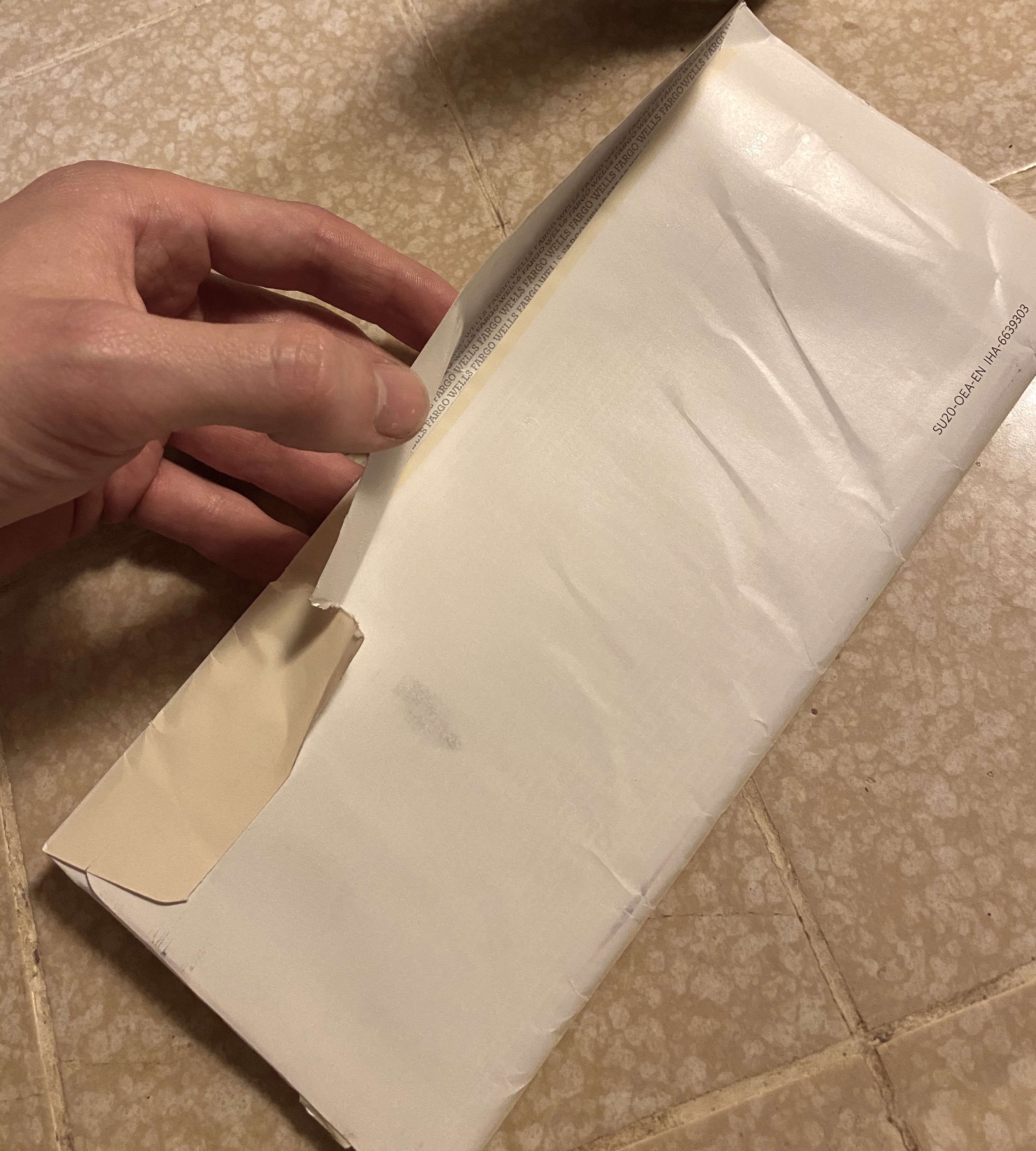
This was around when I was expecting a new credit card, so I was worried. I knew I needed some protection against tampering or theft.
There are lots of options to protect your mail, like having important mail sent to a local drug store for ID pickup or forwarding your mail to a PO box, but having to drive somewhere else every time you want to pick up your mail can be a real hassle. Instead, why not notify yourself whenever your mailbox is open and pick it up soon after? I thought of a quick solution to make sure I get my credit card before the thief does...
There are a lot of mailbox sensors out there, but this one was designed to be discreet: I didn't want to make the mailman/mailwoman feel uncomfortable seeing a sensor staring back at them, and I didn't want the potential thief to see it and take it. The mailbox quietly sends me a notification whenever it is opened and I run over to retrieve the mail before anybody else can.
Summary
I sense the door opening using a hall effect sensor connected to a NodeMCU. The data is sent to AdafruitIO via WiFi and an IFTTT applet responds to each update by sending my phone a notification. This was the easiest and cheapest way I could find to get a connected mailbox up and running.
Details
- Everything is on the underside of the mailbox, out of sight.
- A magnet on the mailbox door moves toward the hall effect sensor when the mailbox when it is opened.
- A battery-powered NodeMCU connected to my wifi detects the hall sensor change and sends it to a "feed" on Adafruit IO.
- An IFTTT applet connected to the Adafruit IO feed responds to the update by pushing a notification to the IFTTT app on my phone.
- If the battery is low, a separate IFTTT applet sends me a notification using the same pipeline as above.
Results
This is a quick-and-dirty project to get the job done, so I used whatever was lying around my house to make it work.
Construction
I used a metal L-bracket and a small piece of wood to fix the hall effect breakout board to the mailbox post as shown below.
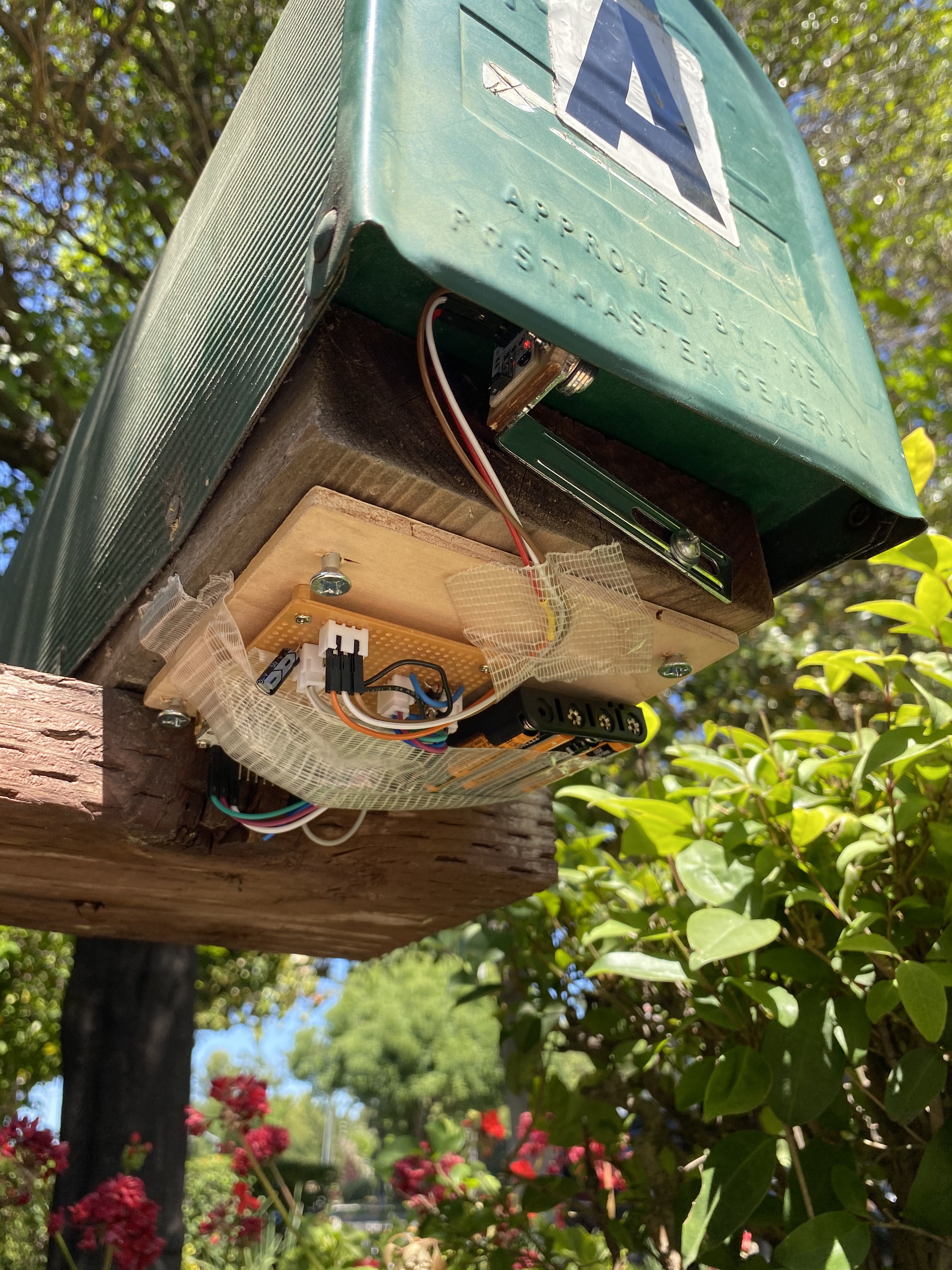
All the electronics were attached to a piece of plywood that I drilled to the bottom of the mailbox. The breadboard and NodeMCU are attached via standard pcb standoffs and the battery with tape. I used more tape to conceal all of the wires below the mailbox, since they were a little long.
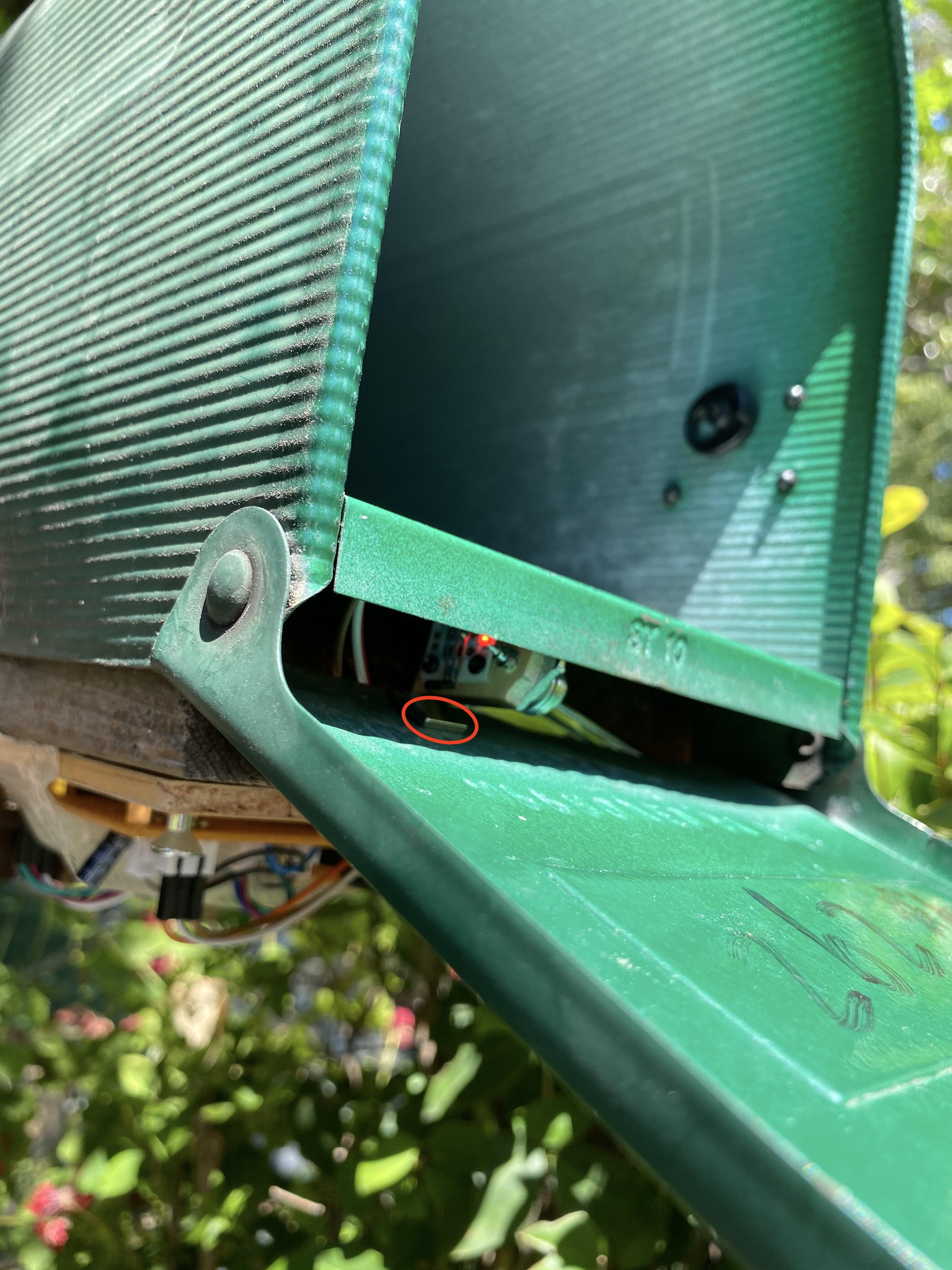
You can see above that the magnet approaches the hall sensor when the mailbox door is open. The sensor itself has a large hysteresis band to avoid reporting a bouncy signal.
Connectivity


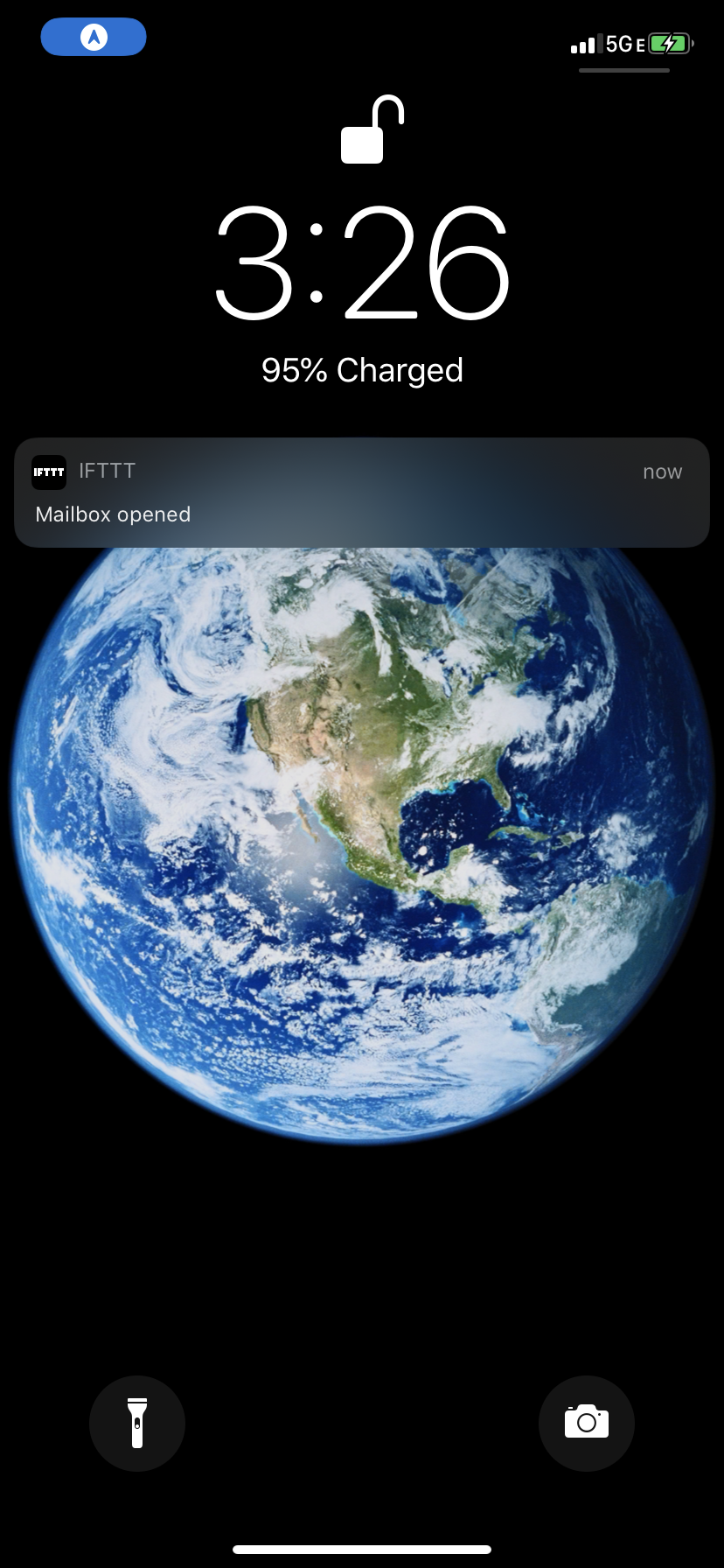
Latency
I initially expected the app would respond in seconds, but I quickly found that unrealistic. The delays are approximately (NodeMCU -> AdafruitIO = 2s), (AdafruitIO -> IFTTT = up to an hour), and (IFTTT -> push notification = a few seconds. The largest variance is between AdafruitIO and IFTTT. After a little [online research](https://www.quora.com/Why-is-IFTTT-so-slow-to-react-to-triggers), it seems that IFTTT uses polling, which can take on the order of 15 minutes. The trick is to use non-polling mechanisms, like "webhooks." That will be my next step.
Notes
- IFTTT sometimes missed events from AdafruitIO. I don't know which side the bug was on.
- Power: my first system was a battery hog. I went from a VCC of 6.3 to 5.8 V in 30 min. I could tell that the bulk of the power consumption was from the ESP8266 itself, since the module was warm. I needed a way to poll the sensor at 2 Hz (at least) while burning less power. My solution was the following state machine:
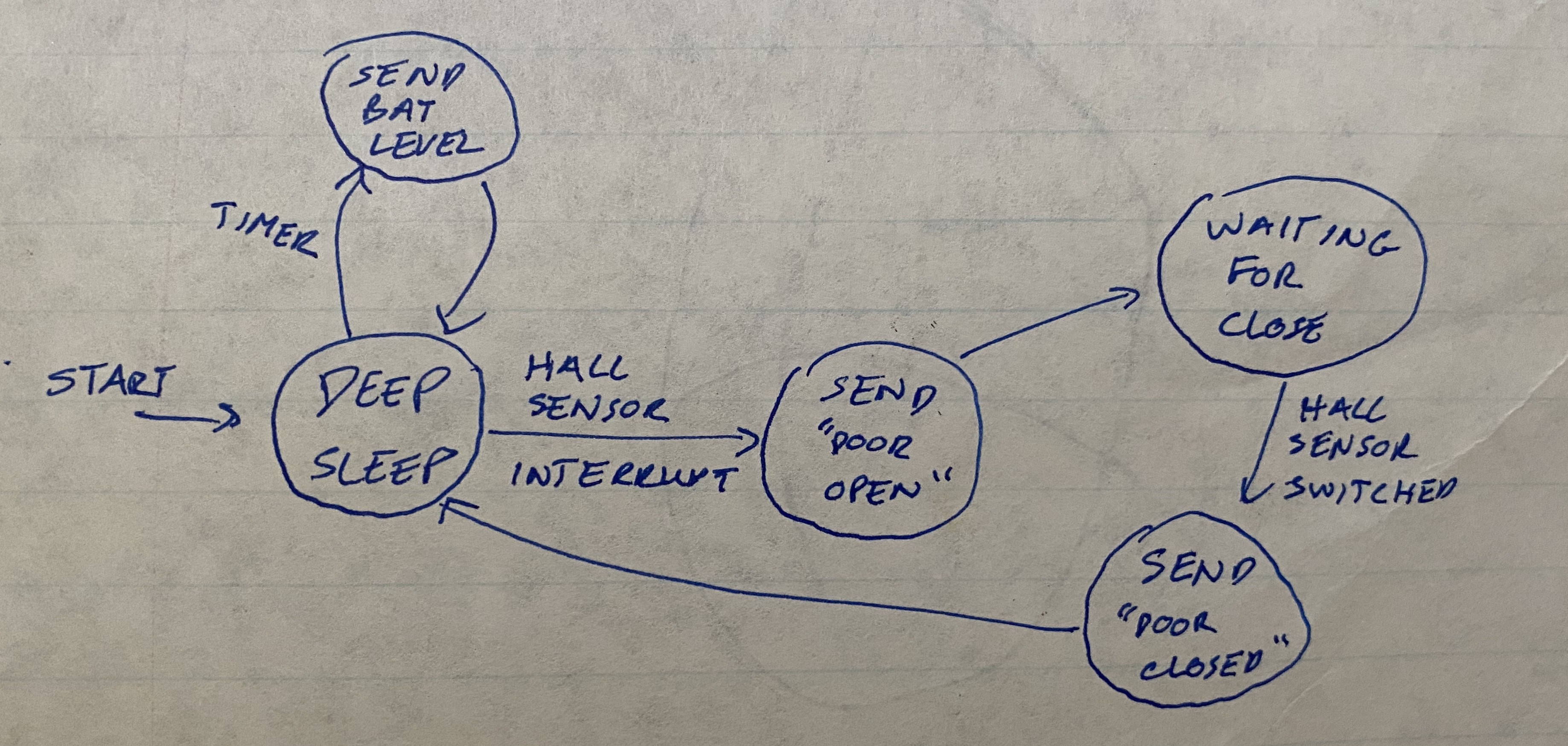
- The hall sensor interrupt required a circuit that would generate a pulse on...
 Rex Garland
Rex Garland


 Bud Bennett
Bud Bennett
 Curt White
Curt White
 Edward
Edward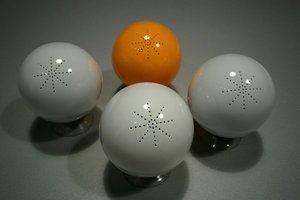
 Faire-soi-meme
Faire-soi-meme
Hi, great project :) Nice and useful 8266 application.
I made something similar with a single ESP8266 ESP-12F and just some resistors and a micro switch. The 8266 is asleep all the time and only wakes up when the micro switch connected to the lid wakes up the 8266. Connecting to my wifi, sending a message with supply-voltage to Thingspeak, and going into sleep again takes only 8 seconds.
I get my email from Thingspeak without any delay. Using a single 18650 Li-ion battery should keep this working for years before I have to recharge the battery.
I put everything inside my locked mailbox and only mounted an antenna externally.
Best regards, Rob.